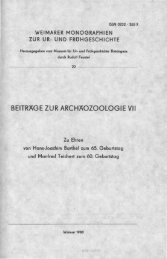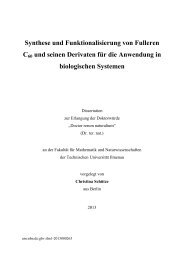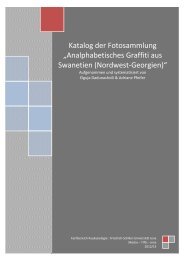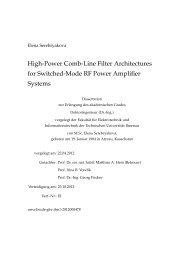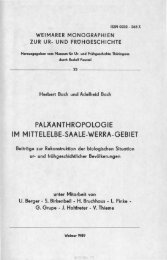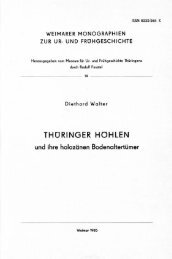Dissertation
Dissertation
Dissertation
You also want an ePaper? Increase the reach of your titles
YUMPU automatically turns print PDFs into web optimized ePapers that Google loves.
|2 Scope of the Thesis|<br />
motifs with high synthetic flexibility and tunable electronic properties shall be generated, applied<br />
and tested. Important is the good stabilization of P and C at the bridge, therefore, old bridging<br />
concepts shall be advanced and new donor functionalities shall be introduced into the binding<br />
sites. This will additionally allow for the application of new catalytically active metals, to overcome<br />
the drawbacks of the first generation catalysts. In this respect, especially the easy to functionalize<br />
phenanthroline derivatives are of interest, as they can be extended by a second coordination sphere<br />
e.g. by a NHC moiety.<br />
Furthermore, the electron storage/mediating capacity of the bridge is important, thus, different<br />
bridging concepts (conjugated/isolated systems) shall be developed and applied to optimize<br />
the electronic communication across the bridge. The introduction of different groups at the<br />
bridge shall be applied to generate an electronic situation that localizes the excited electron<br />
predominantly on the bridge.<br />
With respect to the catalytic center, a number of different metals, e.g. the previously used platinide<br />
metals such as Rh, Re, Pd or Pt shall be applied, but also new metals with a better availability such<br />
as Co, Fe or Ni shall be considered. A comparison within a series of similar catalysts can be used<br />
to increase the efficiency of the system.<br />
With a complete P ∼ B ∼ C-system in hands, using the established methods from the workgroup<br />
of Rau, detailed catalytic (screening)experiments shall be performed to test their activity in the<br />
light driven hydrogen production and to advance the systems in the future.<br />
Toward these new P ∼ B ∼ C-systems, at first, new methods for the preparation of the new<br />
ligands shall be developed and applied. The intermediately obtained ligands shall be analyzed<br />
and characterized. Furthermore, a number of new ruthenium complexes with these ligands shall<br />
be generated and characterized. Using the prepared ruthenium complexes, particularly those<br />
containing bridging ligands, as starting materials, additional catalyst centers shall be attached<br />
to obtain suitable P ∼ B ∼ C-model systems. In this way different series of ruthenium and<br />
ruthenium/catalyst metal complexes, varying in ligand parameters or catalyst parameters shall<br />
be prepared. Especially with the help of different spectroscopic and electrochemical experiments,<br />
using the mono- and oligo-nuclear complexes, detailed insights into the electronic behavior of the<br />
ground and excited state molecules shall be obtained. With respect to the performed changes and<br />
in the scope of an application in catalysis, structure-property relationships shall be revealed.<br />
|53|



